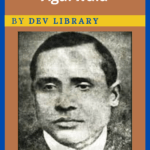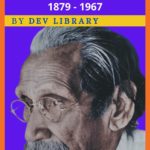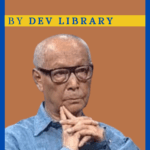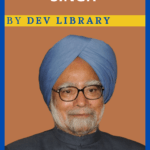Vishwanath Pratap Singh is one of the people whose personality and love has made India to become a modern, powerful country. Vishwanath Pratap Singh was one of the most powerful politicians in India’s politics in the late 20th century. Vishwanath Pratap Singh was the 7th Prime Minister of India to take over as the 41st Raja Bahadur of Manda. He is India’s only prime minister to have been former royalty.

Biography of Vishwanath Pratap Singh
| Name | Vishwanath Pratap Singh[1] |
| Date of Birth | June 25, 1931 |
| Place of Birth | Allahabad, India |
| Father’s Name | Raja Bahadur Ram Gopal Singh |
| Education | 1/ Cornell Brown Cambridge School, Dehradun 2/ Uday Pratap College, Varanasi 3/ Allahabad University 4/ University of Pune |
| Death | November 27, 2008 |
Early life and education of Vishwanath Pratap Singh
Vishwanath Pratap Singh was born on June 25, 1931, to a Hindu Rajput zamindar family of Daiya, located on the banks of the Belan River in the Allahabad district. Vishwanath Pratap Singh’s father’s name is Raja Bahadur Ram Gopal Singh. It is to be noted that the ancestors of Vishwanath Pratap Singh were the rulers of the erstwhile kingdom of Manikpur.
Vishwanath Pratap Singh, who started his formal education from The Colonel Brown Cambridge School in Dehradun, later graduated in Arts and Law from Allahabad University. While studying at Allahabad University, he was elected vice-president of the University Students Union of Allahabad University. Apart from this, V.P. Singh obtained a Bachelor of Science degree in Physics from Fergusson College under The University of Pune.
Also Read: Biography of Vinayak Damodar Savarkar
Political career
Vishwanath Pratap Singh, who wanted to work for the society since his student days, was instrumental in establishing the Gopal School in Allahabad. Apart from this, he actively participated in the 1957 Land Donation Movement started under the leadership of Vinova Bhave. It may be recalled that Vishwanath Pratap Singh had also played an important role in setting up a farm in Pasna village in Allahabad.
In 1969, Vishwanath Pratap Singh joined the Indian National Congress and entered parliamentary politics and was elected to the Uttar Pradesh Legislative Assembly in 1969 as a member of the Congress party and served as the chief whip of the Legislative Assembly. Subsequently, he was elected to the Lok Sabha in 1971 and served as Deputy Minister of commerce in Indira Gandhi’s cabinet from 1976 to 1977.
Chief Minister of Uttar Pradesh
Vishwanath Pratap Singh was sworn in as the Chief Minister of Uttar Pradesh in 1980. It is to be noted that as a chief minister, Vishwanath Pratap Singh took care to eliminate the problem of dacoits that had created terror in Uttar Pradesh at different times.
Significantly, on February 14, 1981, Phoolan Devi, a notorious dacoit from Uttar Pradesh, along with her associates, killed 20 people in Behmai village of Uttar Pradesh. It is to be noted that the massacre that took place in Behmai village had triggered reactions across the country. In view of this, V P Singh resigned from the post of Chief Minister.
It may be recalled that after resigning as the Chief Minister of Uttar Pradesh, V P Singh was appointed as the Leader of the Rajya Sabha in 1984 and remained so until 1987, while V P Singh held cabinet key positions including finance minister and defence minister in the Rajiv Gandhi’s ministry. But subsequently, Vishwanath Pratap Singh’s political career changed and took a new turn as he levelled corruption charges against Rajiv Gandhi over the Bofors scandal and resigned as a defence minister on July 17, 1987. However, he served as a member of the Rajya Sabha even after resigning as a defence minister.
Prime Ministership
After resigning from the Congress party, V P Singh played a key role in the formation of the Janata Dal. V P Singh was elected to the Lok Sabha from Allahabad in June 1988 by-election from the Janata Dal. It is to be noted that the seat fell vacant due to the resignation of Amitabh Bachchan during this period. He was elected to Lok Sabha from Fatehpur (Lok Sabha constituency) in 1989 and became Prime Minister for 11 months. V P Singh was sworn in as the Prime Minister of India on December 2, 1989. It may be recalled that V.P. Singh, as prime minister, played an important role in implementing the BP Mandal Commission report to provide 27 per cent reservation for Other Backward Classes (OBCs) in government jobs and education. It is important to note that V P Singh’s move is seen as a decisive step in ensuring social and political empowerment of OBCs across the country. Many have even called it the “most important step in the interest of OBCs since Independence”.
It is important to note that V P Singh had to face many challenges during his prime ministership. In late 1989 and early 1990, JKLF and Islamist insurgents attacked Hindus in Kashmir. This led to an atmosphere where Hindus had to flee from Kashmir. Apart from this, the daughter of Home Minister Mufti Mohammad Sayeed (then chief minister of Jammu & Kashmir) was abducted by Kashmiri militants during Singh’s prime ministership. The militants had to be released in exchange for the release of Mufti Mohammad Sayeed’s daughter from the clutches of militants. V P Singh’s government had to face a lot of criticism for this.
Another important incident is that on September 25, 1990, after offering prayers at the Somnath temple in Gujarat, BJP’s party president L.K. Advani, started the Rath Yatra with his confidant Pramod Mahajan. The plan was designed in this way that it will end in Ayodhya in Uttar Pradesh where Advani will lay the foundation stone for the construction of a royal Ram temple. But the then Prime Minister V P Singh strongly opposed this. Before he could complete the tour by reaching the disputed site in Ayodhya, he was arrested by Lalu Prasad Yadav’s orders at Samastipur on the charges of disturbing the peace and fomenting communal clashes which took place at different places for this Rath Yatra. It may be recalled that after opposition to Advani’s Ram Rath Yatra, the BJP withdrew support to the National Front government following which V P Singh resigned as prime minister on November 7,1990. His prime minister’s term was only 343 days.
Conclusion
V P Singh again won the Lok Sabha election from Fatehpur in 1991, but he subsequently retired from active politics in 1996. Though he retired from active politics, Singh was constantly active on issues related to Dalits and vulnerable people. Apart from visiting many countries during this time, V.P. Singh became involved in social justice and various artistic activities. In particular, he painted various paintings. It is to be noted that his art exhibitions have also been held at various places. V P Singh was also interested in photography.
It may be recalled that Vishwanath Pratap Singh passed away on November 27, 2008 at Indraprastha Apollo Hospital in New Delhi at the age of 77 after suffering from cancer and kidney disease for over a decade.
FAQs
1. How long did Vishwanath Pratap Singh served as the Prime Minister?
Ans: Vishwanath Pratap Singh served as the seventh President of India from December 2, 1989 to November 10, 1990. His prime ministership was 343 days.
2. Why did Vishwanath Pratap Singh resign as defence minister in Rahul Gandhi’s cabinet?
Ans: Accusing Rajiv Gandhi of corruption over Bofors scam, Vishwanath Pratap Singh resigned as defence minister on July 17, 1987.
3. When and where was Vishwanath Pratap Singh born?
Ans: Vishwanath Pratap Singh was born on June 25, 1931 into a Hindu Rajput Zamindar family.
4. When did V.P. Singh died and in what age?
Ans: Vishwanath Pratap Singh passed away on November 27, 2008 at Indraprastha Apollo Hospital in New Delhi at the age of 77 after suffering from cancer and kidney disease for over a decade.

Hi, I’m Dev Kirtonia, Founder & CEO of Dev Library. A website that provides all SCERT, NCERT 3 to 12, and BA, B.com, B.Sc, and Computer Science with Post Graduate Notes & Suggestions, Novel, eBooks, Biography, Quotes, Study Materials, and more.








